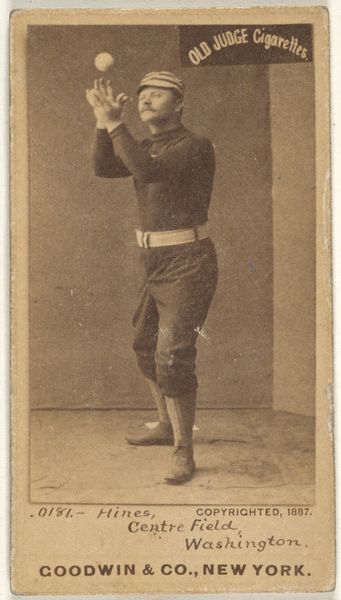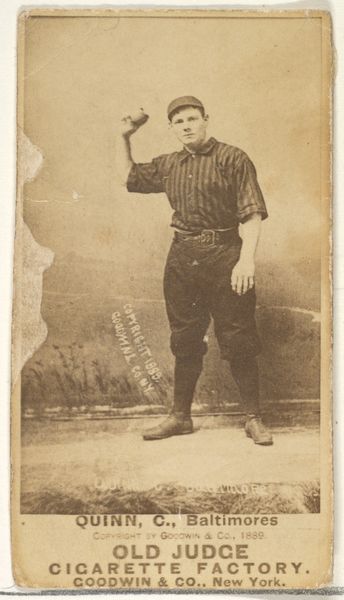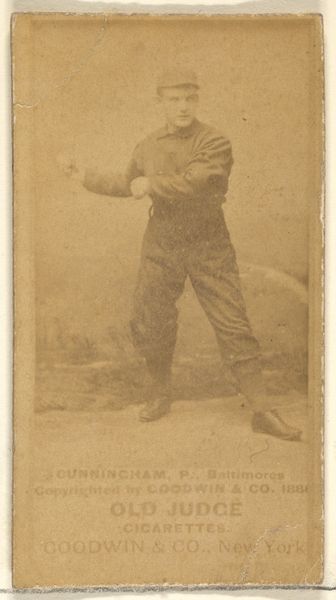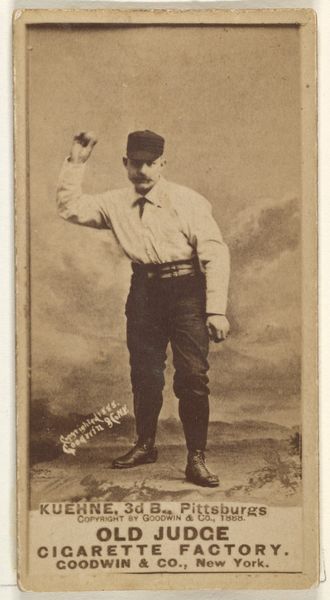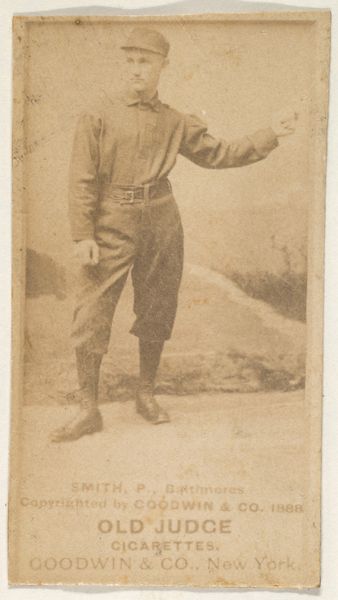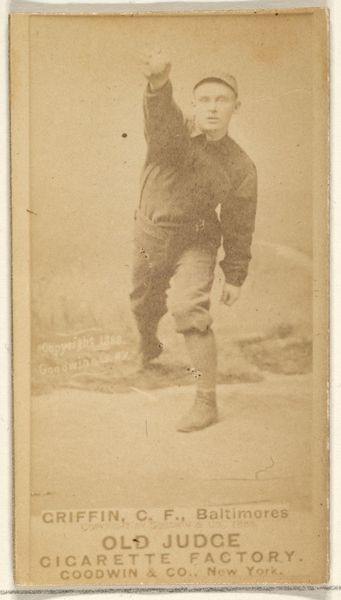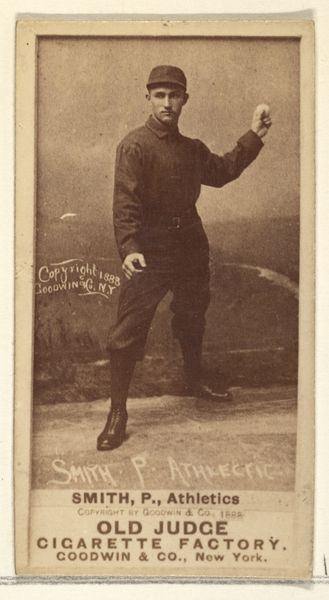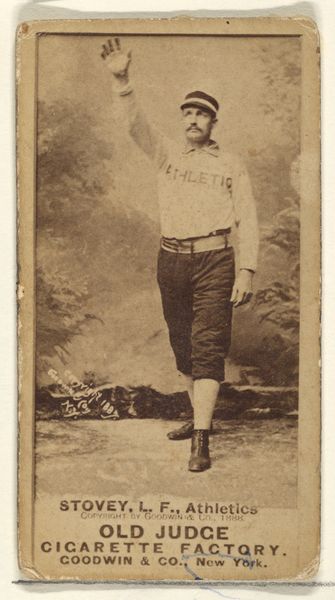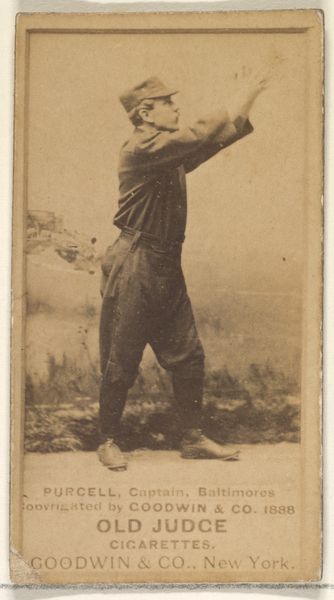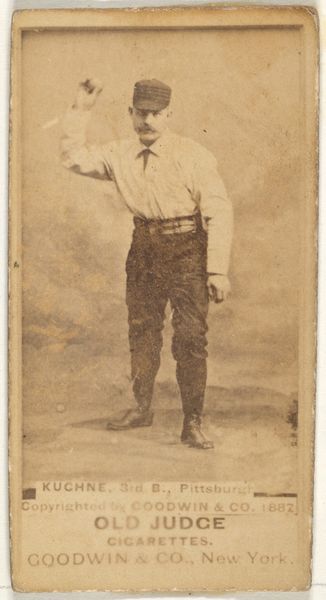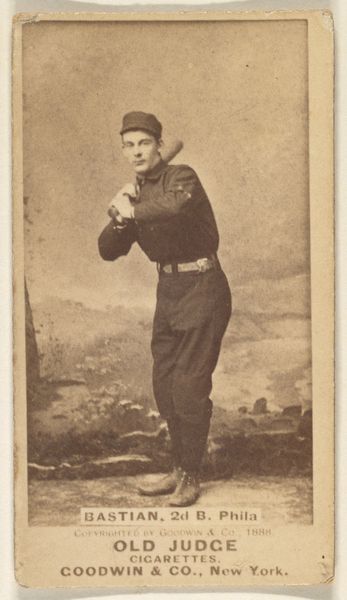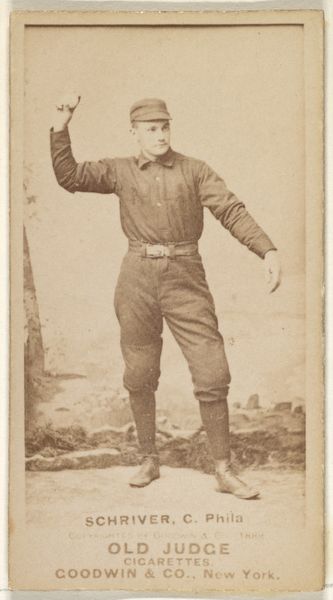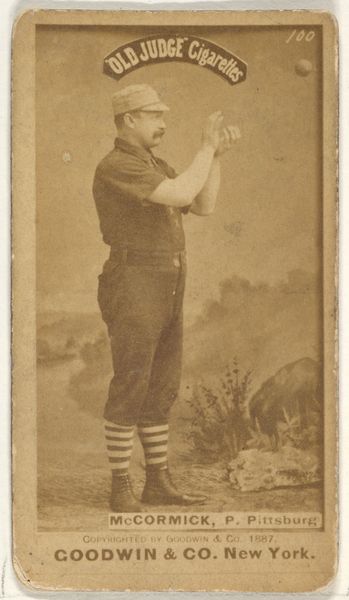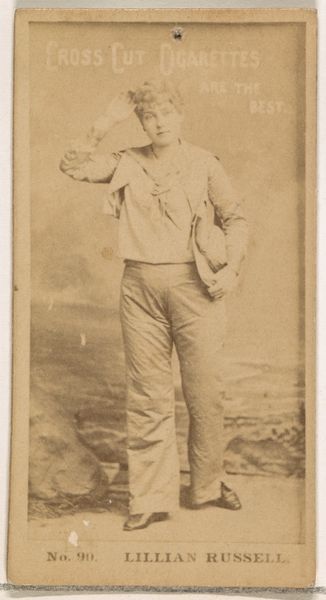
Charles W. "Lefty" Marr, Right Field, Cleveland, from the Old Judge series (N172) for Old Judge Cigarettes 1889
0:00
0:00
drawing, print, photography
#
portrait
#
drawing
# print
#
charcoal drawing
#
street-photography
#
photography
#
genre-painting
Dimensions: sheet: 2 11/16 x 1 3/8 in. (6.9 x 3.5 cm)
Copyright: Public Domain
Editor: This is an 1889 photographic print from the "Old Judge" series, featuring Charles W. "Lefty" Marr, a baseball player. It’s fascinating to see how early sports figures were immortalized like this. The sepia tone gives it such a sense of history and nostalgia, doesn’t it? What strikes you most about this piece? Curator: Beyond the nostalgia, I'm intrigued by how this image participates in the construction of celebrity and identity. Consider the context: late 19th century, industrializing America, rising popularity of baseball, and the pervasive influence of tobacco companies. How does mass-produced imagery like this contribute to the romanticization of athletic prowess, and who benefits? Is it the player, the team, or the corporation? Editor: That's a good point, it definitely makes you think about the power dynamics involved. The baseball card seems almost… performative, in a way. Curator: Exactly! It’s a meticulously constructed image. How much control did Marr have over his own representation? To what extent is his identity commodified for consumption? And how might this feed into larger discussions of labor, exploitation, and the evolving definition of American masculinity at the time? Look at the composition, his stance – it's all carefully posed for the camera. This begs the question, what narrative is being constructed and for whose consumption? Editor: I never considered the staged aspect and the business agenda lurking underneath it all. It almost strips away the innocence of a simple baseball card. Curator: Precisely. By unpacking these layers, we reveal how seemingly innocuous images are deeply embedded in socio-economic and cultural narratives. It invites us to examine how representation perpetuates certain power structures, and how art can both reflect and shape our understanding of identity, gender, and class. Editor: Thanks, that gives me a whole new perspective on what to look for. I really appreciate your insight into these issues.
Comments
No comments
Be the first to comment and join the conversation on the ultimate creative platform.
